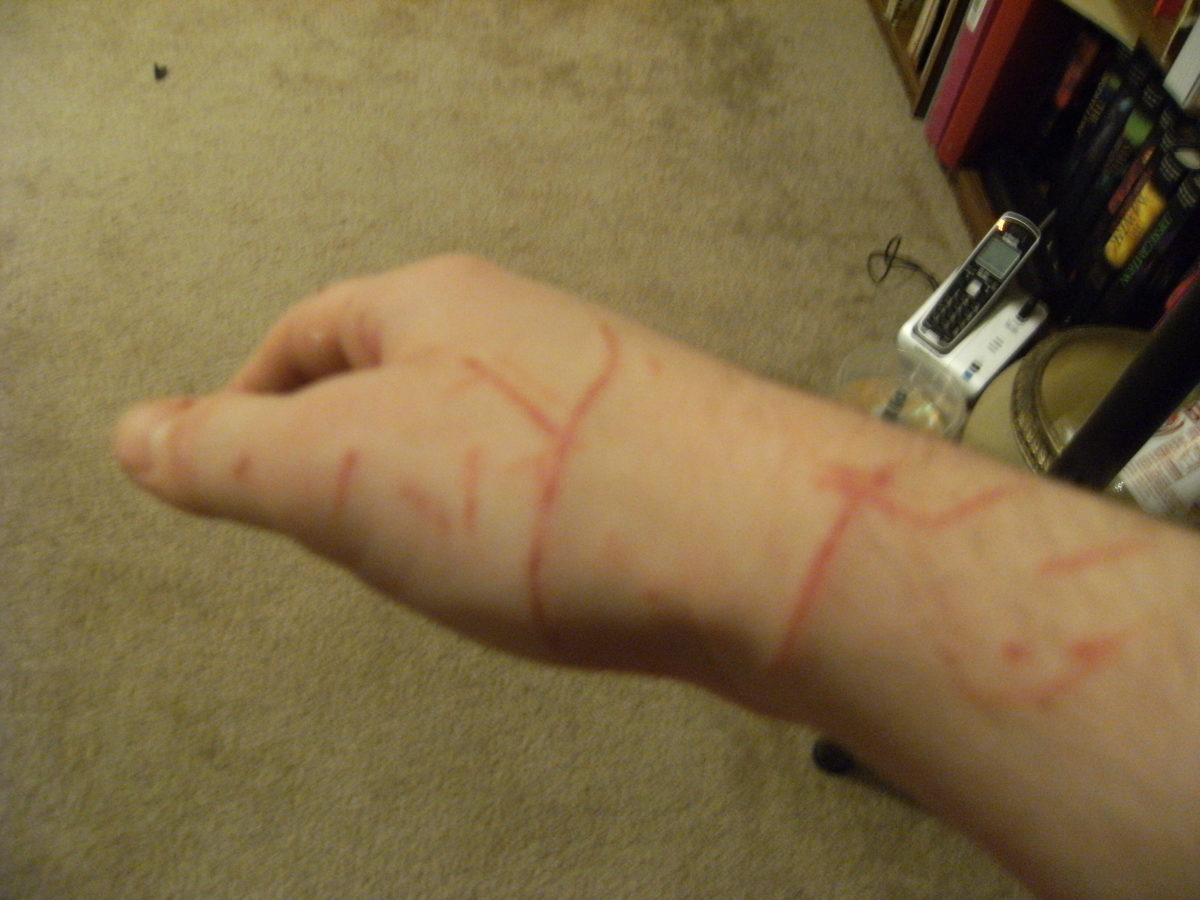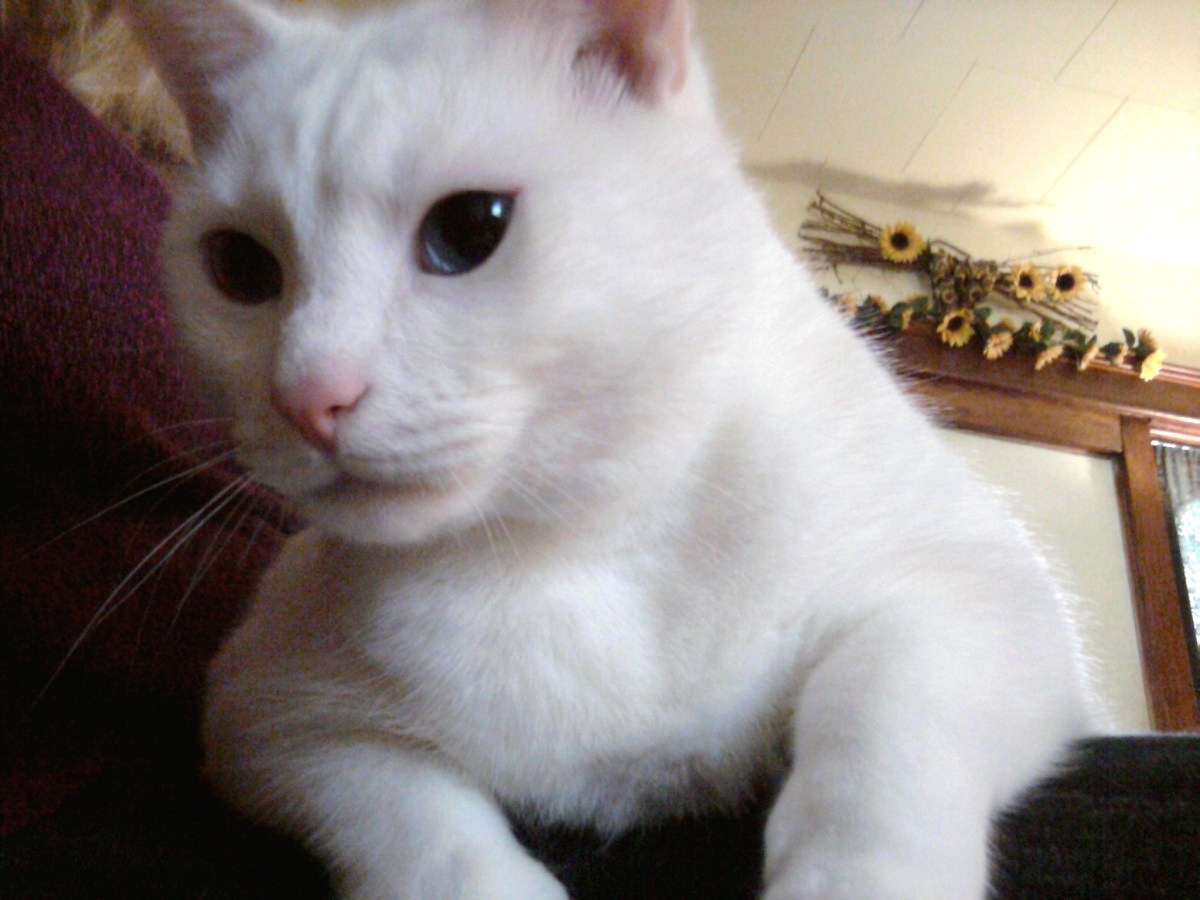- HubPages»
- Pets and Animals»
- Cats & Cat Breeds»
- Cat Behavior
Meows, Purrs, Hisses and Chirps. What Do Cat Vocalizations Mean?
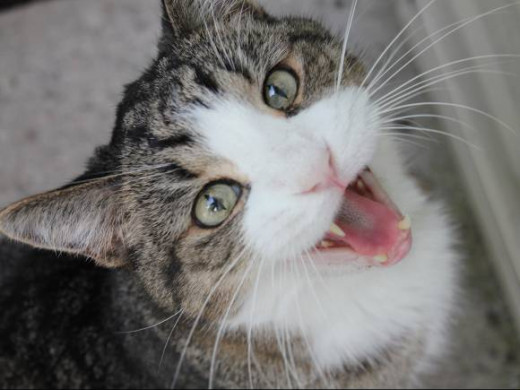
Cat Vocalizations and Their Meanings
Those of us who live with cats know most of them are very "talkative" animals. We can sometimes figure out what our cats are trying to say - any cat owner knows her own cat's "feed me" or "open the door" meow, for instance. However, cats have more to their vocabulary than just "meow." They also purr, chirp, hiss, growl, and yowl. What does this "cat talk" mean?
The multipurpose meow
The meow is a sound that came about due to the cat's contact with humans. They prefer to communicate with each other through body language and scent. That's not to say that they don't vocalize with each other at all - anybody who has heard two cats fighting (or mating) knows that they aren't completely silent creatures. However, the meow is the cat's way of talking to us humans who don't speak cat.
Cats have many different types of meows, and some are specific to the particular cat. When I was growing up, we had a cat who did a deep, throaty meow whenever he wanted catnip, and only when he wanted catnip, I had another cat who made a kitten-like "mew" when he wanted attention. Most cat owners probably have similar stories. Even so, there are certain types of meows that generally mean the same thing from cat to cat.
- Basic, short, pleasant meow or mew (sometimes with a chirp): A greeting.
- A more drawn out "me-ow-ow": A request or protest ("How about some attention?").
- A louder drawn out "mrrooooowww": More of a demand than a request. ("Feed me now! Can't you see that I'm starving?")
- Low-pitched growling meow or a sharp "mup!": A complaint. ("What is this garbage you put in my food bowl?")
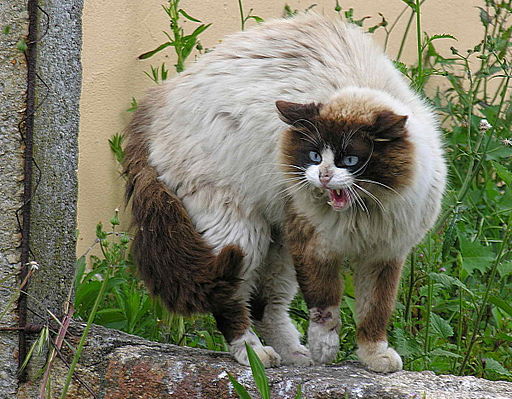
Hisses, yowls, and other unpleasant cat sounds
It's fairly easy for us to figure out the meanings of most of the less-than-pleasant sounds our feline friends make. Cats hiss when surprised, annoyed, afraid, or as a way of saying "back off." Yowls can also be used as a warning or threat, but cats will also sometimes yowl if they want attention or are confused. When a cat makes a long, loud howl or scream, it means he's scared or in pain (my old cat used to make an ear-splitting banshee shriek sound when in the car on the way to the vet). If a cat sees another cat or other animal invade his territory, he'll often let out a long, obnoxious sound that's a cross between a whine and growl as a warning to the intruder.
One of the least pleasant cat sounds is the caterwaul. This is the sound made by a cat in heat, which is her way of announcing to the world that she wants to mate. If the desire to help control the pet population isn't enough to get your female cat spayed, listening to a caterwaul is an added incentive!
Chirping and chattering cats
The chirp isn't a sound exclusive to birds. Cats often make a chirping or chattering sound when they are watching birds through a window or screen door. No, they aren't imitating the feathered ones, but are voicing their frustrations at being unable to get to what they see as their prey. My own cat does this when she's chasing the dot from the laser pointer - it seems that she's figured out that she can never actually catch the mysterious red dot.
Many cats also make a similar "chirrup" sound as a greeting. One of my old cats would do this when he wanted me to follow him somewhere (usually to an empty food dish or dirty litter box).
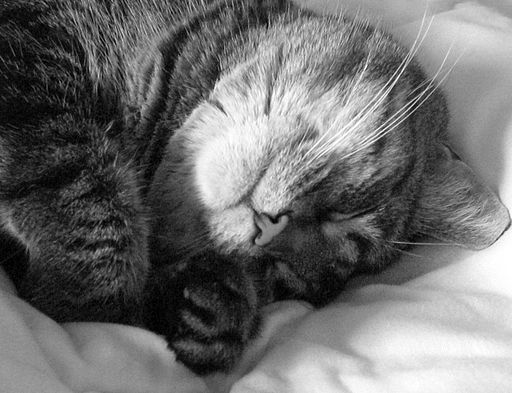
The peaceful purr
Most cat owners would put the purr at the top of the list of favorite feline sounds. Even many people who generally don't like cats can appreciate the soothing qualities of the purr. Because of the way cats often purr when they're sleeping, sitting in our laps, and/or getting chin or ear scratches, we humans tend to assume that a purr always means contentment. While cats certainly do purr when they are contented, they also sometimes purr when they are sick, in pain, or otherwise distressed. Many researchers think the purr originally came about as a way for mother cats to communicate with their kittens. It's probable that cats also purr as a way to help themselves relax. There's even a theory that the frequency of a cat's purr promotes healing, for the cat and whoever else is in earshot. No wonder cats will often sit on our laps and purr when we're sick!

